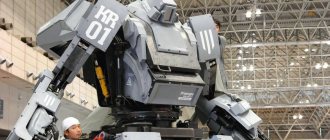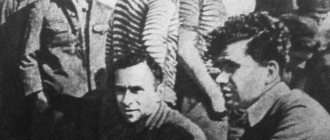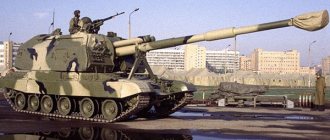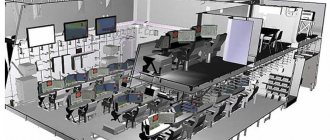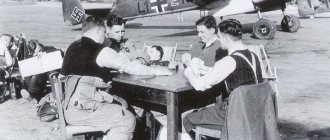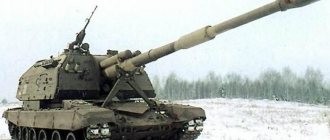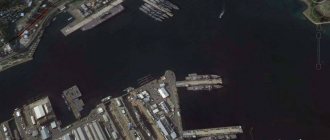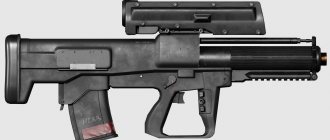iRobot, USA
The company was founded by three MIT scientists in 1990. Produced military robots with funding from DARPA. In addition, it is known for the production of household robots: the Roomba robotic vacuum cleaner, the Braava robotic mop and the Mirra robotic pool cleaner. In 2016, iRobot decided to focus on peaceful applications of robotics and sold its militarized product development business to Arlington Capital Partners. But before that, iRobot managed to produce a lot of robots for military purposes.
PackBot
is the company's first military robot funded by DARPA (the contract was signed in 1998). Essentially, it is a robotic platform on which various tools can be mounted depending on the task being performed. The basic version of the PackBot Scout had five device bays. PackBot Explorer is equipped with cameras (including infrared), laser pointer, and audio sensors. The most common configuration was the PackBot 510 - this robot could be equipped with devices for demining explosive devices, REDOWL systems for detecting snipers, and even kits for detecting radiation contamination. The modern version of the PackBot 510 with a manipulator weighs 10.89 kg, reaches speeds of up to 9.3 km/h and can operate autonomously from 4 to 8 hours, depending on the intensity of use. PackBot robots have been widely used by the US military in Iraq and Afghanistan. Several PackBots were also deployed in search and rescue operations following the September 11, 2001 terrorist attacks in the United States.
110 FirstLook
– a multi-purpose compact robot on a tracked chassis, developed in 2011. The main purpose is to help detect potential danger during a combat operation. Equipped with four cameras with IR illumination and a communication device. It can fall from a height of 4.5m onto a hard surface without harm. Moreover, if it turns over, it can return to its original position thanks to the rotary flippers. Example of use: thrown manually into a window and transmits the image to the control panel. The robot's weight is 2.4 kg, length is 25.4 cm, maximum speed is 5.5 km/h, it works for up to 6 hours at a distance of up to 200 m from the operator. Depending on the task being performed, it can be additionally equipped with a manipulator for neutralizing explosive devices, a thermal imager, as well as means of bacteriological, chemical and radiation reconnaissance. Operating temperatures – from -20 °C to +55 °C. The Joint Improvised-Threat Defeat Organization (JIDO) purchased a hundred of these robots in 2012, and later the Pentagon ordered another 500 for work in Afghanistan.
Warrior
is a robotic platform designed primarily for moving potentially dangerous objects (for example, unexploded ordnance). If necessary, it can be used for clearing a path, extinguishing a fire or reconnaissance. Thanks to the robotic “arm,” it can also carry wounded soldiers from the battlefield by grabbing them by their clothes. Equipped with video cameras and a number of sensors. The weight of the platform without a manipulator is 165.6 kg, with a manipulator – 226.8 kg. The manipulator can extend to a distance of up to 192.2 cm, in the fully extended position it operates with a load of up to 31.6 kg, in the closed position it operates with a load of up to 136.1 kg. The robot overcomes obstacles up to 47 cm in height and can move at an incline of up to 45º. Operates from 4 to 10 hours and is controlled at a distance of up to 800 m from the operator.
The Seaglider
is an autonomous uninhabited underwater vehicle that was actually developed by the University of Washington, but gained popularity after iRobot acquired the rights to manufacture the vehicle in 2008. It studies the physical, biological and chemical properties of water and can transmit the resulting data using a transmitter and tail antenna. To do this, the device floats up so that the tail part is above the surface of the water. The appearance of the robot resembles a rocket. Battery life (depending on the mission) is up to 10 months with a power reserve of 4600 km. Weighing 52 kg, the robot dives to depths of up to 1000 m and moves at a speed of 0.5 knots. In May 2010, Seaglider participated in research into the waters of the Gulf of Mexico following the Deepwater Horizon oil rig explosion incident.
Ranger
is an unmanned underwater vehicle, also developed not by iRobot, but by a company called Nekton Research. The latter was acquired by iRobot, and the original development team merged into the new company. The robot participates in expeditionary missions, missions to detect underwater mines, reconnaissance and patrol missions. Unlike the Seaglider, the Ranger is propeller-driven and designed for short missions. With a total length of 0.86 m, it weighs just under 20 kg and moves at a speed of about 15 knots (27.78 km/h).
Transphibian
is an autonomous uninhabited underwater vehicle designed to search for mines, reconnaissance operations and water area surveillance.
It uses a hybrid navigation system, thanks to which it can perform tasks in both shallow and deep water. Equipped with four fins. In movement it looks like a small turtle that cannot swim well. Chembot
is a flexible miniature robot project, the development of which was sponsored by DARPA - they needed a robot that could squeeze into a hole with a diameter of about 30 mm. As planned, the design should be free of hard materials, and the robot’s “skin” should consist of an elastic polymer capable of expanding and contracting. The robot was set in motion thanks to changing air pressure in different parts of its “body”. Separate robot prototypes were created, but the creators did not figure out how to make it autonomous and get rid of a bunch of wires responsible for pressure.
LANDroid
is a miniature robot router. iRobot won a competition from DARPA to develop it in 2008. A year later, the LANDroid Ember was released, which fit into the cargo pocket of military trousers. The purpose of the robot is to quickly build a wireless network for receiving and sending information in combat areas. The robot was equipped with cameras and antennas. The design also includes rotary flippers.
From Google to SoftBank
In December 2013, the company was acquired by Google. During the deal, eight more companies involved in the design of robots were absorbed, and the purchase amount remained secret. All nine enterprises became part of Replicant, the IT giant's new robotics division led by Android co-creator Andy Rubin. “The future is bright,” Rubin commented on the purchase on Twitter. There was less than a year left before Rubin left the company, and less than three years before Boston Dynamics was put up for sale. What went wrong?
Despite the fact that, in terms of existing developments, Boston Dynamics was an industry leader, the company at that time was a “typical R&D laboratory” that did not commercialize its developments and created robots exclusively to order, and all types of the company’s robots at that time could be I can count it on the fingers of two hands, Albert Efimov, director of the Skolkovo Foundation’s IT cluster, shared his skepticism immediately after the deal.
Advertising on Forbes
After acquiring Boston Dynamics, Google immediately made it clear that the company would live in a new way. In particular, it was announced that after the completion of existing contracts with the military, there are no plans to conclude new ones. Instead of carrying military cargo, the new robots should, as Google planned, care for the elderly and work in warehouses. However, the euphoria from the opening prospects faded quickly. The main reason is that Boston Dynamics robots assumed long-term investments, without clear prospects for commercial returns, and Google shareholders needed results, at least in the foreseeable future. Already in October 2014, Rubin left the corporation, and a year later Google no longer quite understood how and in what direction to move forward. According to Business Insider, Raybert had great confidence in Rubin's experience and instincts, and was therefore extremely upset by his departure. In addition, many then realized that the companies within Replicant were too different, and there were serious questions about the robotics development strategy itself. “These robots move without any problems, but from the very beginning it was unclear how they would make money for Alphabet shareholders,” said Richard Windsor of the analytical agency Edison Investment Research.
With Rubin's departure, the hope for the planned release of breakthrough technology in the field of robotics to the general public by 2022 has become completely illusory. The employees were not ready for this either. Many of them went to work not for the “Google division”, but for Rubin, and the desire of the new management to put pressure on roboticists only caused dissatisfaction among the staff with dissatisfaction among the Boston Dynamics employees. The Internet giant itself saw no reason, according to Jonathan Rosenberg, who replaced Rubin as head of Replicant, to “spend more than 30% of the resources of the entire division on something that will produce results only in ten years.” Finally, a Bloomberg publication in early 2016 added fuel to the fire - the agency published an excerpt from the company’s internal correspondence, in which the director of communications for Google X (a division involved in the development of promising technologies) wanted the company to distance itself from Boston Dynamics because their robots scare people , since many may be deprived of their jobs.
In March 2016, Boston Dynamics was put up for sale. A buyer was found a year later: in June 2017, Mark Raybert’s company was acquired for an undisclosed amount by the Japanese telecommunications corporation SoftBank, whose creator Masayoshi Son is known for being able to wait - for his own company, he plans business development for 300 years in advance. Commenting on the deal, Raybert told the Financial Times that both Boston Dynamics and SoftBank are well aware that it will take a long time to realize the full potential of robotics. “Smart robots will be the driving force behind the IT revolution, and when it comes to moving robots, Mark and his team at Boston Dynamics are the clear leader. With us, the company will continue to explore ways to use technologies that will make life simpler, safer and more meaningful,” Son did not hide his optimism. Over the next year and a half after the purchase, SoftBank invested $37 million in Boston Dynamics.
Samsung Techwin (now Hanwha Techwin), South Korea
The company was founded in 1977 under the name Samsung Techwin, as a subsidiary of Samsung. In 1979, she began making video cameras. A year later, it switched to jet engines for the South Korean Air Force (manufactured jointly with General Electric). Since then, the company has been involved in the production of helicopters, video recorders, video surveillance systems, and lenses. Together with other companies, she developed semiconductors, optical communication systems, was engaged in research activities in the aerospace industry, and worked with nanotechnology. In December 2014, Samsung announced the sale of Techwin to the South Korean conglomerate Hanwha Group. In June 2015, the acquisition was completed and the company was renamed Hanwha Techwin.
Samsung SGR-A1
- A robotic turret designed to support South Korean military forces in the Korean Demilitarized Zone. Development began in 2003, and the first prototypes appeared in 2006. Equipped with a laser rangefinder, an infrared thermographic camera, an infrared illuminator, a 5.56 mm Daewoo K3 machine gun and a 40 mm Milkor M32 semi-automatic grenade launcher. It can track and track targets both during the day (range up to 4 km) and at night (range 2 km). But to use lethal weapons, an operator is required. The weight of the structure is 117 kg, height – 120 cm, range – up to 3.2 km.
Naval forces
The naval forces also did not go unnoticed, the use of uninhabited marine vehicles in which began immediately after the Second World War.
In 1946, during the Bikini Atoll operation, remotely controlled boats collected water samples immediately after nuclear testing. In the late 1960s, seven-meter boats equipped with an eight-cylinder engine were equipped with remote control equipment for mine sweeping. Some of these boats were assigned to the 113th minesweeper division, based in the port of Nha Be in South Saigon. Later, in January and February 1997, the RMOP (Remote Minehunting Operational Prototype) participated in a twelve-day mine countermeasures exercise in the Persian Gulf. In 2003, during Operation Iraqi Freedom, uninhabited underwater vehicles were used to solve various problems, and later, as part of the US Department of Defense program to demonstrate the technical capabilities of promising weapons and equipment in the same Persian Gulf, experiments were conducted on the joint use of the SPARTAN vehicle and the cruiser URO "Gettysburg" for reconnaissance.
Currently, the main tasks of uninhabited marine vehicles include:
- mine action in areas of operation of aircraft carrier strike groups (ACG), ports, naval bases, etc. The area of such an area can vary from 180 to 1800 square meters. km;
- anti-submarine defense, including tasks of monitoring exits from ports and bases, ensuring protection of aircraft carriers and strike groups in deployment areas, as well as during transitions to other areas. When solving anti-submarine defense tasks, six autonomous marine vehicles are capable of ensuring the safe deployment of an AUG operating in an area of 36x54 km. At the same time, the armament of hydroacoustic stations with a range of 9 km provides an 18-kilometer buffer zone around the deployed AUG;
- ensuring maritime security, which includes protecting naval bases and related infrastructure from all possible threats, including the threat of a terrorist attack;
- participation in maritime operations;
- supporting the actions of special operations forces (SSO);
- electronic warfare, etc.
To solve all problems, various types of remotely controlled, semi-autonomous or autonomous marine surface vehicles can be used.
In addition to the degree of autonomy, the US Navy uses a classification based on size and application features, which makes it possible to systematize all the assets being developed into four classes: X-Class is a small (up to 3 meters) uninhabited marine vehicle to support MTR operations and isolate an area. Such a device is capable of conducting reconnaissance to support the actions of a naval group and can be launched even from 11-meter inflatable boats with a rigid frame;
Harbor Class - devices of this class are developed on the basis of a standard 7-meter boat with a rigid frame and are designed to perform maritime security and reconnaissance tasks; in addition, the device can be equipped with various lethal and non-lethal means. The speed exceeds 35 knots, and the endurance is 12 hours;
The Snorkeler Class is a 7-meter semi-submersible vehicle designed for mine warfare, anti-submarine operations, and supporting Navy special operations forces. The speed of the device reaches 15 knots, autonomy – 24 hours;
Fleet Class is an 11-meter rigid-hulled vehicle designed for mine warfare, anti-submarine warfare, and maritime operations. The speed of the device varies from 32 to 35 knots, autonomy – 48 hours.
Uninhabited underwater vehicles are also classified into four classes (see table).
The very need to develop and adopt marine uninhabited vehicles for the US Navy is defined by a number of official documents, both the Navy itself and the armed forces as a whole. These are “Sea Power 21” (Sea Power 21, 2002), “Comprehensive review of the state and prospects for the development of the US Armed Forces” (Quadrennial Defense Review, 2006), “National Strategy for Maritime Security” (2005), “National military strategy" (National Defense Strategy of the United States, 2005), etc.
OJSC “766 Department of Production and Technological Equipment”, Russia
"766 UPTK" was created in 2001 and specializes in the development and production of military robotics. Has its own engineering and design center. Other types of activities include research, design, experimental and testing work, as well as the development and production of certain types of building materials and structures.
"Uran-6"
– a robotic tracked complex for demining dangerous areas. Can work in urbanized, mountainous and lightly wooded areas. In essence, this is nothing more than a remote-controlled mine trawl. All-round visibility is provided by four cameras. There are five interchangeable tools for interaction with different types of soil. The robot works on surfaces with a slope of up to 20º and overcomes obstacles up to 1 m high. It can lift a weight of up to 1 ton. The robot itself weighs 6 tons, it can work for 5 hours without refueling (uses diesel fuel). The complex is controlled at a distance of up to 800 m. Uran-6 took part in demining Palmyra.
"Uran-9"
is a multifunctional combat robotic complex. The main purpose is fire support and reconnaissance. Thanks to the modular system, it can be equipped with various types of weapons. Standard set: a Kalashnikov tank modernized machine gun (PKTM) of 7.62 mm caliber, a 2A72 automatic cannon of 30 mm caliber, an Ataka guided weapon system and four RPO PDM-A Shmel-M infantry rocket flamethrowers. Equipped with a laser warning system and a smoke screen system. It is also equipped with thermal sensors, a laser rangefinder, day and night cameras. When equipped, it weighs 12 tons and can move at speeds of up to 35 km/h. At one gas station, a diesel engine can run for 6 hours straight. The complex is controlled at a distance of up to 4 km. Hit targets at a distance of up to 5 km during the day and up to 3.5 km at night.
"Uran-14"
– robotic fire extinguishing complex. Designed for remote fire extinguishing in dangerous or hard-to-reach places for people, for example, in a burning ammunition warehouse. Can be used for reconnaissance of fires, including hidden ones, thanks to a thermal imaging video surveillance system. Works on surfaces with a slope of up to 30º. Curb weight – 14 tons, maximum speed – 10 km/h, water jet range – 50 m. Controlled remotely at a distance of up to 1 km.
JSC NITI Progress, Russia
This research and technology institute was established in June 1959 to accelerate the development and production of the R-17 liquid-propellant single-stage ballistic missile. For his contribution to the creation of new models of rocketry, NITI Progress was awarded the Order of the Red Banner of Labor in 1982. In addition to orders from the defense industry, the institute develops equipment for processing gold ores, printing money, winding protective coatings, producing tires, repairing heating power networks, woodworking and other fields of activity.
"Platform-M"
– multifunctional robotic tracked complex. Designed primarily for fire support of units in combat and reconnaissance missions. You can “hang” a minelayer or trawl on the robot - then it will be able to perform mining or demining tasks. The robot is equipped with a Kalashnikov tank modernized machine gun (PKTM) of 7.62 mm caliber with 400 rounds of ammunition, four mounted AGS-30 grenade launchers of 30 mm caliber, as well as the Kornet anti-tank missile system. Works on surfaces with a slope of up to 25º. With its own weight of 800 kg, the robot moves at speeds of up to 12 km/h and can carry a load weighing up to 300 kg. Own power sources are enough for 10 hours of continuous movement. The robot's design also includes video cameras, a range finder, a thermal imager and a Fara radar station.
SRR
is a compact robot about which little is known. It is equipped with two video cameras and, due to its small size, can perform reconnaissance missions. For example, it can be thrown manually into a building window and transmit to the operator an image of what is inside. Runs on crawler tracks.
Exponent, USA
The company was founded as Failure Analysis Associates in April 1967. Takes part in investigations of disasters and other incidents: from fires and plane crashes to oil spills and aerial bombings. Also studies the consequences of damage. On behalf of NASA in 1986, the company was engaged in research into the Challenger space shuttle disaster. Known for research and development in more than 20 scientific fields. Renamed Exponent in 1998.
MARCbot
– a wheeled robotic platform designed to detect explosive devices. Created in 2004 and developed as an inexpensive version of the robot for use in Iraq. Equipped with a video camera on a retractable rod to check various objects (for example, cars) for the presence of explosive devices. It is one of the smallest and most frequently used robots in Iraq. According to an essay by political scientist P.V. Singer's "Robots at war: the new battlefield", some US Army soldiers in Iraq attached an M18A1 Claymore anti-personnel fragmentation mine to a MARCbot to send the robot forward if they suspected an ambush. The weight of the structure is 15 kg, length – 61 cm, height – 34 cm. Operates up to 6 hours in a row on one battery charge. Controlled at a distance of up to 300 m from the operator.
SKTB applied robotics MSTU im. N.E. Bauman, Russia
The special design and technology bureau dates back to 1972 - by order of the rector of the then Moscow Higher Technical School. N.E. Bauman, a student laboratory of transport systems was created at the Faculty of Design and Mechanics. On its basis, models of planetary rovers and penetrometers for installation on the Lunar Rover and Mars Rover were developed. In 1986, it became known as the Design Bureau of Special Robotics of the Moscow Higher Technical University named after. N.E. Bauman, in 1999 – Special Design Bureau of Applied Robotics at Moscow State Technical University. N.E. Bauman. Now it has become LLC SKTB Applied Robotics. For more than 30 years, it has specialized in the development of mobile robotic systems and additional equipment. It also develops medical manipulators.
MRK-27
– a mobile robotic complex developed in 1994.
Used to perform a wide range of tasks. A separate modification has been created for each. MRK-27-VT and MRK-27-VU are equipped with manipulators and are designed for explosion-technical work and moving explosive devices. MRK-27-MA – for work in conditions of increased radiation. MRK-27-X – for work in conditions of chemical contamination; it can analyze the air and place chemically hazardous objects in a special container. MRK-27-GP - for checking the area using a gas analyzer. And the MRK-27-BT (“combat point”) variant is intended for fire support of units. It is equipped with a 7.62 mm Pecheneg machine gun, two RShG-2 rocket-propelled assault grenades, two RPO-A Shmel rocket-propelled flamethrowers and six KRAG mortar-type smoke cluster grenades. Moreover, each modification of the robot can conduct visual reconnaissance. The basic platform operates on a single-section chassis with variable track geometry. The manipulator has five degrees of freedom. It can be additionally equipped with a hydraulic destroyer, a rolling device, power tools and a protective armor kit. The weight of the MRK-27 platform is no more than 210 kg, length is 112 cm, height is 65 cm. It works on surfaces with a slope of up to 20º. Equipped with batteries that last for 4 hours of continuous operation. Performs tasks at temperatures from -30 °C to +40 °C. MRK-25 “Grasshopper”
is a mobile robotic complex on a tracked chassis. Equipped with television cameras, lighting system and manipulator. Designed for detection and recognition of explosive devices. With its own weight of 186 kg, the robot can work on surfaces with a slope of up to 40º. There is a remarkable story connected with the “Grasshopper”. In June 1997, an uncontrolled nuclear reaction began at the Russian Federal Nuclear Plant due to an error. People were evacuated from the site. To prevent a second Chernobyl, a German robot from the Telerob company was sent - he was supposed to pull out a container with plutonium-239. But it could not withstand the radiation and failed. An MRK-25 “Grasshopper” urgently flew in from Moscow to replace him, which pulled out not only a container with plutonium, but also a non-working German robot.
MOBOT CH-HV
– a mobile robot designed to eliminate accidents at the Chernobyl nuclear power plant. “Mobot” means “mobile robot”, “Ch” means “Chernobyl”, and “HV” means “chemical forces”. It was on the instructions of the head of the chemical troops of the USSR Ministry of Defense that this robot was developed in August 1986. He carried out radiation surveys, removed radioactive debris, dismantled pipes, erected roof formwork for the M zone, placed beacons and carried out other work. It was equipped with a crawler chassis with polyurethane tracks, a cable layer, a manipulator, a front loader and two television cameras. Later it was modified and equipped with a jackhammer, a docking device, a new manipulator with a two-fingered grip and an acoustic communication system. The total weight of the robot reached 430 kg.
American robot Atlas: Is he so cool?
One of the idols of the pro-Western public is the American company BostonDynamics, which often publishes recordings of tests of its robots. And the company's most praised robot was Atlas. Among liberals and “Svidomo” Euro-Ukrainians, it has literally become an object of worship. Still would! After all, he performs various spectacular stunts - jumping over obstacles, jumping from one elevation to another, and jumping onto boxes.
But how progressive is it really? Let's take a closer look at it:
Notice how the robot waves its arms when jumping. Only humans do this. This is the so-called locomotor reflex. We inherited this reflex from our distant ancestors, who walked on four limbs. All animals that need to move on the surface have it. The fact is that moving in space is a complex process that requires the coordinated work of many muscles. If the brain were doing this, then all attention would be directed only to not getting entangled in the movements of the limbs. And attention should be directed to the environment - you need to avoid predators and other dangers, look for food and sexual partners. Therefore, nature acted more intelligently - the program of repeated similar movements is “hardwired” in the spinal cord. The sequential movement of the limbs is controlled by a special chain of neurons that connects the fore and hind limbs. The brain only sends a signal to turn on this chain, and then it works on its own.
Vyacheslav Dubynin, IFC spring 2022, lecture 2, brain and movement (from 1:01:25)
Human Locomotion: Chapter 3, Ideal Motions During the Gait Cycle
When walking, the signal in the spinal cord moves in a figure of eight. From the right foot to the right hand, then to the left foot and left hand. When running, the forelimbs work in antiphase with the hind limbs. When the right leg is brought forward, the left arm is also brought forward at the same time. The left leg and right hand are at the same moment behind.
It is thanks to this innate reflex that we wave our arms when walking. This is completely useless for us now - you can press your arms to the sides of your body and it will not affect your walking in any way. But this requires constant effort and attention. It is easier for us to wave than not to wave, because signals are constantly passing along the locomotor chain.
Let's return to the Atlas. The robot does not have an innate locomotor circuit, it is simply a mechanism created by man. Why does Atlas wave its arms and move like a human? The answer is simple to the point of banality: because Atlas just reproduces a recording of the movements of a person, an actor. Motion capture technology has been confidently used in cinema for a long time: an actor in a special suit plays a role, and a computer reconstructs his cinematic model using contrast marks. Then any humanoid character can be applied to this model. For example, like in the movie Avatar.
Here, for example, is what the guys from the Corridor channel did:
New Robot Makes Soldiers Obsolete (Corridor Digital) — Corridor
Impressive, isn't it? Looking at this, you might think that the Americans have achieved unprecedented success in robotics. But this is all just computer animation.
Here's how it was filmed:
New Robot Can Now Fight Back! (Corridor Digital)
(from 2:54)
How We Faked a "Boston Dynamics" Robot
Same motion capture technology. The video is simply a parody of BostonDynamics videos.
But what if you were shown this video as evidence of a real breakthrough?
So, the Atlas robot just reproduces pre-recorded movements. This is very far from artificial intelligence. Today, any robotic mechanism can reproduce predetermined movements, even children's wind-up toys, not to mention industrial robots that weld seams on the conveyors of car factories. Artificial intelligence should not reproduce predetermined movements, but independently develop a program of actions based on the task and environmental conditions. If you change the height and location of the boxes, then the entire sequence of actions recorded by Atlas will be useless.
The same applies to other “parkour” videos:
They simply invited a professional gymnast, put him in a special suit, and recorded all the movements.
At what technological level is American robotics today?
Based on the BostonDynamics materials, it can be understood that they were able to make the bipedal robot walk, maintaining balance, and not fall when poked by the development team:
01:27
The robot can also get up when falling forward:
2:05
These are the simplest functions that were developed a long time ago, even when hoverboards appeared that independently maintain balance:
In fact, the company is also conducting experiments with hoverboards:
Integrating a program for lifting from one position into a robot also cannot be called a breakthrough - it is a rigid program of action. And to determine the position, one sensor is enough. A person can rise from any lying state, and he does not need a list of sequences of movements for each individual case.
Now let's look at more interesting things - interaction with objects.
Please note that all objects with which Atlas interacts have special stickers that resemble a QR code.
(on the door below - 00:10, on the boxes - 01:22)
The robot recognizes not the door or drawer itself, but the sticker, approaches it, and then engages in a standard sequence of movements. Remove those stickers and he won't be able to lift the drawer or open the door. Recognizing a black and white image is also a simple and long-solved problem. Even smartphones can do this.
Walks
The Americans also show how their robots walk in open areas. You may get the impression that they choose the road themselves and avoid obstacles:
(00:17)
But in reality everything is simpler. The route with all the irregularities is hard-coded into the robot’s memory (the so-called navigation map, or Navigation Map):
(00:32)
The robotic dog has a sensor that detects obstacles (00:56).
In general, the same technology is used as in robomobiles. The robot can only move along a pre-laid path. He navigates the route using the same stickers. In our country, even children have been making similar robots that navigate using special markings for a long time:
(2:10)
Here is a video from MIT, where they are also experimenting with robots:
The robot dog jumps over obstacles. This is also done very simply - the sensor detects an obstacle, and then a predetermined program is activated, which enhances the repulsion of the limbs in the extension phase. There is no talk here about the formation of a behavior program. If such a robot encounters an unusual obstacle, its jump program will be useless.
Thus, we see that the highest achievements of American robotics are only a skillful combination of existing technologies today, and the apparent intelligence was created not for practical purposes, but for the amusement of the ignorant public.
The desire for wow effect, impressive spectacles and appearances is characteristic of the West, but this does not bring real progress to our lives.
A little about criticism of the robot Fedor.
The pro-Western public does not limit itself to praising American robots, but also vehemently vilifies ours. Particularly appreciated was the Russian robot Fedor, who of all our robots looks the most progressive. Let's look at this criticism in more detail.
1) Fedor is far from jumping Atlas
Let's start with the fact that Fedor and Atlas were developed for different tasks. If Atlas is a humanoid robot project aimed at becoming a commodity, then Fedor is a robot project that in the future will be able to replace astronauts in orbit. Accordingly, there is absolutely no need for him to jump over his head.
Secondly, it’s generally strange to blame the fact that a Russian robot in some way lags behind its Western counterparts. The BostonDynamics company was founded back in 1992, under early Yeltsin, when the turbulent 90s began in Russia, enterprises were closed en masse, and miners went on strike, demanding repayment of months of wage debts. Engineers fled the country, unique Soviet machine tools were exported, and old women traded bulls and seeds in order to somehow survive until retirement. At that time we saw robots only in American science fiction films. If someone said that by the year 20 we will have our own robots, he would be considered crazy. In the West, throughout the 90s and 2000s, there was progressive development in electronics and other technology. Billions of dollars and euros were pumped into the industry, which has not happened in Russia all these years.
It is often said that the robot can barely move, and is even supposedly suspended on chains because it is about to fall. Naturally, he stands and walks perfectly on his own two feet. The precautions are due to the fact that this is simply the only experimental and expensive sample. If Americans are given such funding that they can make several robots and test them on the street without fear of breaking them, then with our modest investments, the loss of even one robot is a disaster. BostonDynamics has an entire department dedicated to repairing robots.
2) Fedor is just an avatar
A popular misconception on the Internet. It arose because this particular mode is often shown.
But this is just one of the modes. The robot can act independently, as confirmed by its developer Evgeniy Dudorov:
20:36
3) Fedor has foreign engines
Indeed, foreign engines were initially taken, but now they are being replaced with domestic ones:
(36:12)
4) Billions have been wasted on Fedor, it would be better if they were distributed to pensioners
Fedor's developer Evgeniy Dudorov spoke about the cost of creating the robot:
42:09
So, the cost of Fedor is more than 30 million rubles. In round figures we can assume that this is about 0.5 million dollars.
For comparison, let's look at the cost of the American Atlas. According to Evgeny Dudorov:
(43:32)
- “about 20 million dollars”!! Atlas is one of the ten most expensive robots in the world.
That is, the creation of one of our robots is 40 times cheaper than the American one!
If we take into account the costs of creating the line of robots from the Americans, the gap will be several times larger.
Another example is the BigDog robot, for the creation of which the American agency Darpa allocated $32 million:
Despite the beautiful presentations, the American Navy refused to purchase this robot because it did not see any benefit for itself.
Let me also remind you that BostonDynamics was founded in 1992, and has been working with robots for more than 27 years!
Despite the fact that we started working on robots much later, and our funding is tens of times less, we are already breathing down the backs of the Americans. Another 10-20 years will pass, and our robots will be in no way inferior to the world’s advanced analogues.
Peter Ivanov
Roboteam, Israel
The company was founded in 2009, is based in Tel Aviv, and is headquartered in Gatensburg (a city in the USA). Develops and produces multi-purpose robotic platforms for military, law enforcement, special forces and peacekeeping missions.
MTGR
– a small-sized robot designed for clearance of explosive objects, reconnaissance, detection of chemical, bacteriological or radiation contamination. Equipped with 8 cameras providing a 360-degree view, with two cameras located directly on the manipulator. Can move on slopes up to 45°. Maximum speed – 3.5 km/h, operating time on one battery charge – 3 hours, dead weight – 9.4 kg. Carries loads weighing up to 10 kg. The manipulator is capable of lifting loads weighing up to 5 kg in a fully extended state (in this case, its length will be 49 cm). Operates in temperatures from -20 °C to +60 °C. Controlled by the operator at distances up to 500 m.
IRIS
– a lightweight throw-type robot on a wheeled platform. It can work in sand, mud, water and on rocks (the developer is silent about snow). Equipped with two PTZ cameras and designed for reconnaissance missions. The robot weighs 1.85 kg and can carry 1 kg of load. Its length is 23 cm and its height is 11 cm. It reaches a speed of up to 5 km/h and operates for up to 2 hours on a single battery charge. Controlled remotely – at a distance of up to 200 m from the operator. Operates in a temperature range from -20 °C to +60 °C.
PROBOT
– a robotic all-terrain platform designed for transporting goods. May participate in search and rescue operations or evacuate wounded from the battlefield. The robot is equipped with cameras (including night vision) that provide a 360-degree view. In some cases, it is equipped with sensors for conducting bacteriological, chemical and radiation reconnaissance. The weight of the platform itself is 410 kg, but can carry up to 700 kg of payload. It reaches speeds of up to 9.6 km/h and can move autonomously for up to 8 hours at a time. Its dimensions are impressive: 150x120x60 cm.
TIGR
– an all-weather robot designed for sapping work. It is equipped with a manipulator with five degrees of freedom, which is capable of lifting 19 kg when folded and 7 kg when extended. It is equipped with day and night vision modules (five color cameras and one thermal), which allows it to be used as a reconnaissance vehicle. The manufacturer claims that the robot operates at temperatures from -32 °C to +49 °C. The weight of the platform is 74 kg, length – 91.2 cm, height – 35.3 cm. It is equipped with a human recognition system, which works accurately during daylight hours at a distance of up to 600 m, and at night – at a distance of up to 300 m.
Robots are entering the market
At the end of September, Boston Dynamics announced the start of mass production of Spot robots. For this event, she prepared another viral video - the “dog” performs a fashion show, including in the rain, to the song Uptown Funk by Mark Ronson and Bruno Mars, and even dances a little. The robot can work in both heat and cold (the range of possible temperatures is from minus 20 to plus 45 degrees), can carry up to 14 kg and run at a speed of 1.6 m/s, it is waterproof and is equipped with cameras that provide it with visibility 360 degrees. The robot's battery life is 90 minutes. So far the company has 20 copies of the “dog” ready.
Where can I use it? This is the main question for now. Raybert himself, speaking at a conference on artificial intelligence organized by Amazon in the summer, singled out the entertainment industry as a possible application. In particular, he proposed the idea of a “networked game with physical characters” and demonstrated how robots controlled remotely by users try to take the ball from each other on the playground.
Advertising on Forbes
In a sign that entertainment could be a major use case for Spot, Boston Dynamics is in talks with Cirque du Soleil to use a robotic dog in the arena. What the company definitely doesn't want, despite its military roots, is for Spot to harm people in any way.
The problem remains that Spot doesn't seem to be very capable of interacting with people yet. For example, a journalist from The Verge says that while testing the device inside the editorial office, those gathered were instructed to step back two meters so that Spot would not inadvertently kick them. Spot still weakly responds to signals from the physical world; the robot’s world model consists of obstacles, support points and pre-programmed routes, notes The Verge. In that sense, the path Boston Dynamics has taken is different from what many robotics scientists are currently focused on, including at the company's alma mater, Carnegie Mellon University. An employee of the local laboratory, Henny Admoni, is working on the interaction between a robot and a person. "Boston Dynamics has always been strong in mechanics and controls, but robots operating in a human environment can't avoid people," he says.
Raybert himself does not share the fears of ordinary people and journalists who predict a robot apocalypse. “I’ll give you some statistics: if you look at the number of likes and dislikes for all the videos on our YouTube channel, you will see that the ratio is 20:1, and if you take only the last few years, then generally 50:1. At the same time, the media continues to tirelessly trumpet how terrible robots are, and I can’t understand what’s the matter.”
When Boston Dynamics robots enter the market, they will, of course, face competition. The most obvious competitor is the robotic dog Aibo, the first version of which Boston Dynamics once helped develop. Aibo bills itself as a robotic companion that is not too different from owning a regular dog. Sony produced Aibo for seven years, from 1999 to 2006 (during which time it sold 150,000 copies), and then stopped production for more than 10 years as part of cost cutting. In 2018, they decided to resurrect the project, and in the first six months, 20,000 Aibo (“dog” costs about $2,000) were sold on the market.
It is the segment of companion robots such as Aibo, according to P&S Market Research, that will be the fastest growing category of the robot market in the coming years. The total volume of “consumer robots,” according to the research company’s calculations, will be $34.1 billion by 2022.
Advertising on Forbes
General Robotics, Israel
Private company founded in 2009. Engaged in research, development and production of robotic platforms for defense markets in different countries.
DOGO
– a miniature reconnaissance robot equipped with lethal weapons. It is used not only in reconnaissance, but also in assault operations, when it is necessary to identify and eliminate a threat. For this purpose, it is equipped with a Glock26 self-loading pistol of 9 mm caliber and a laser pointer. The robot weighs 10 kg. 8 cameras with infrared illumination are responsible for the review. November 13 module for DOGO. Instead of a pistol, it contains a pepper spray canister to neutralize the target.
DONKEY
– a folding multifunctional robot for quick deployment on the ground. Designed for reconnaissance, route planning, and cargo transportation. Thanks to its modular structure, it can be equipped with a manipulator, which makes it suitable for engineering work. Weighs 40 kg, can carry loads up to 70 kg. It runs silently thanks to four electric motors - one for each wheel. Maximum speed – 16 km/h, range – 40 km. Can work on surfaces with a slope of up to 30º.
Who are Boston Dynamics?
The engineering company Boston Dynamics was founded in 1992. Although 15 years earlier, the president of the brand, Mark Raybert, defended his dissertation on a new design of limbs for robots, which made every movement of the machines natural.
In 1980, Mark became a professor at Carnegie Mellon University, and 6 years later he developed a jumping robot that could maintain balance. He then went to work at the Massachusetts Institute of Technology, where he assembled a group of engineers for his first business.
The company existed modestly until 2005, but then established cooperation with DARPA (the US military technology agency). It was for him that Boston Dynamics developed the four-legged BigDog. In 2005, a video of his test brought them worldwide fame.
In 2013, the company was bought by Google Inc. for $500 million, but resold it in 2017 - it was not possible to launch commercially successful projects. The current owner of Boston Dynamics is a Japanese investor in the IT industry – SoftBank.
Guardbot, USA
This is an American engineering company located in Stamford, near New York. Specializes in the development of amphibious spherical robotic systems. However, so far she has created only one product - it repeats the company name. According to the creators, the Guardbot project was originally conceived for a mission to Mars.
https://youtu.be/v6IZTY4__Sc
Guardbot
– a robotic spherical system, the main purpose of which is to search for explosive devices and monitor the territory or water area. The propulsion system is based on a patented mechanism with a pendulum. The robot moves by changing the center of gravity. At the same time, it is capable of working on land, sand, water and snow. Travel speed on land is up to 20 km/h, on water – 6.5 km/h. The kit includes day and night cameras, a WMD detection sensor, and a laser scanner. The structure weighs 26 kg, the diameter in the thin part is 60 cm, in the wide part – 91.5 cm. It is equipped with two electric motors and can work autonomously for up to 25 hours. Despite the spherical design, it overcomes slopes up to 30º. Operates at temperatures from -30 °C to +40 °C.
The third part is ahead.
Technological solutions
Unmanned aircraft, like other robotics in fact, became possible thanks to a number of technical solutions related to the advent of an autopilot, an inertial navigation system, and much more.
At the same time, the key technologies that make it possible to compensate for the absence of a pilot in the cockpit and, in fact, enable UAVs to fly, are technologies for creating microprocessor technology and communication tools. Both types of technologies came from the civilian sphere - the computer industry, which made it possible to use modern microprocessors, wireless communication and data transmission systems, as well as special methods for compressing and protecting information for UAVs. The possession of such technologies is the key to success in ensuring the required degree of autonomy not only of UAVs, but also of ground-based robotic vehicles and autonomous marine vehicles. Using a fairly clear classification proposed by the University of Oxford, we can systematize the “abilities” of promising robots into four classes (generations):
- The speed of the processors of the first generation universal robots is three thousand million instructions per second (MIPS) and corresponds to the level of a lizard. The main features of such robots are the ability to receive and perform only one task, which is programmed in advance;
- a feature of second-generation robots (mouse level) is adaptive behavior, that is, learning directly in the process of performing tasks;
- The performance of third-generation robot processors will already reach 10 million MIPS, which corresponds to the level of a monkey. The peculiarity of such robots is that to receive a task and learn only a demonstration or explanation is required;
- The fourth generation of robots will have to correspond to the level of a person, that is, capable of thinking and making independent decisions.
There is also a more complex 10-level approach to classifying the degree of autonomy of UAVs.
Despite a number of differences, the MIPS criterion remains common in the presented approaches, by which, in fact, classification is carried out. The current state of microelectronics in developed countries already allows the use of UAVs to perform full-fledged tasks with minimal human participation. But the ultimate goal is to completely replace the pilot with his virtual copy with the same capabilities in decision-making speed, memory capacity and the correct action algorithm.
American experts believe that if you try to compare human abilities with the capabilities of a computer, then such a computer should produce 100 trillion. operations per second and have sufficient RAM. Currently, the capabilities of microprocessor technology are 10 times less. And only by 2015 will developed countries be able to reach the required level. In this case, miniaturization of the processors being developed is important.
Today, the minimum sizes of processors based on silicon semiconductors are limited by their production technologies based on ultraviolet lithography. And, according to a report from the US Secretary of Defense, these maximum sizes of 0.1 microns will be reached by 2015–2020.
At the same time, an alternative to ultraviolet lithography can be the use of optical, biochemical, and quantum technologies for creating switches and molecular processors. In their opinion, processors developed using quantum interference methods can increase the speed of calculations by thousands of times, and nanotechnology by millions of times.
Serious attention is also paid to promising means of communication and data transmission, which, in fact, are critical elements for the successful use of unmanned and robotic means. And this, in turn, is an integral condition for the effective reform of the armed forces of any country and the implementation of a technological revolution in military affairs.
The US military's plans for deploying robotics are ambitious. Moreover, the bravest representatives of the Pentagon sleep and see how whole herds of robots will wage war, exporting American “democracy” anywhere in the world, while the Americans themselves will sit quietly at home. Of course, robots are already solving the most dangerous problems, and technological progress does not stand still. But it is still very early to talk about the possibility of creating fully robotic combat formations capable of independently conducting combat operations.
Nevertheless, to solve emerging problems, the most modern creation technologies are used:
- transgenic biopolymers used in the development of ultra-light, ultra-strong, elastic materials with increased stealth characteristics for UAV bodies and other robotic equipment;
- carbon nanotubes used in UAV electronic systems. In addition, coatings made of nanoparticles of electrically conductive polymers make it possible to use them to develop a dynamic camouflage system for robotics and other means of armed warfare;
- microelectromechanical systems that combine microelectronic and micromechanical elements;
- hydrogen engines to reduce the noise of robotics;
- “smart materials” that change their shape (or perform a specific function) under the influence of external influences. For example, for unmanned aerial vehicles, DARPA's Office of Research and Science Programs is experimenting with the development of a variable-flight wing concept that would significantly reduce the weight of the UAV by eliminating the use of hydraulic jacks and pumps currently installed on manned aircraft;
- magnetic nanoparticles that can provide a leap in the development of information storage devices, significantly expanding the “brains” of robotic and unmanned systems. The potential of the technology, achieved through the use of special nanoparticles measuring 10–20 nanometers, is 400 gigabits per square centimeter.
Despite the current economic unattractiveness of many projects and research, the military leadership of leading foreign countries is pursuing a focused, long-term policy in the development of promising robotic and unmanned means of armed warfare, hoping not only to preserve personnel, to make the conduct of all combat and support missions safer, but and, in the long term, develop innovative and effective capabilities to ensure national security, combat terrorism and irregular threats, and effectively conduct current and future operations.


